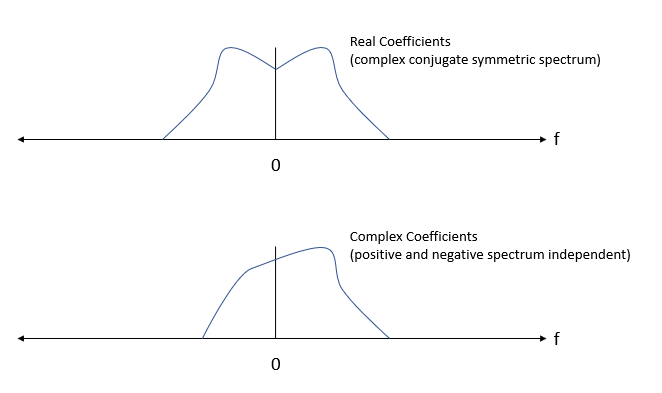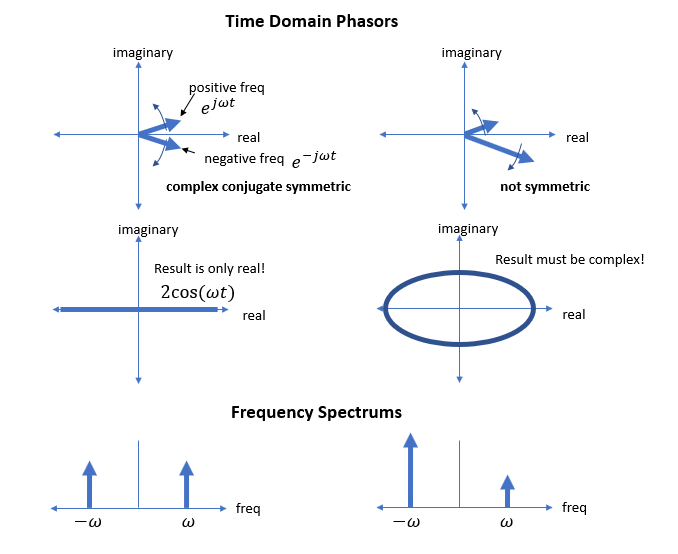The baseband received signal may have both in-phase and quadrature components; in other words, the complex envelope of the received signal is complex (not real).
This is quite easy to see. Assume the transmitted signal is an in-phase signal $s(t) = x(t)\cos(2\pi f_c t)$, where $x(t)$ is a real baseband signal.
Now consider the wireless channel. Let's assume a line-of-sight channel with no reflections, only a delay $\Delta$, and a perfectly synchronized receiver. The received signal is $$r(t) = x(t)\cos(2\pi f_c + \phi),$$ assuming $x(t-\Delta) \approx x(t)$ (this is reasonable in many cases, since $x(t)$ varies very slowly relative to the propagation delay).
At the output of the quadrature receiver, we have, in the in-phase and quadrature branches respectively,
$$\begin{align}
r_I(t) &= \text{LPF} \{ x(t)\cos(2\pi f_c t + \phi)\cos(2\pi f_c t ) \} \neq 0, \\
r_Q(t) &= \text{LPF}\{ x(t)\cos(2\pi f_c t + \phi)\sin(2\pi f_c t ) \} \neq 0.
\end{align}$$
In other words, the delay in the channel produces a phase-shift in the received carrier, which causes it to become "spread out" in both the I and Q branches. As a consequence, the complex envelope of $r(t)$ is complex.
Now, it could be argued that the receiver's synchronizer will cancel out the phase shift $\phi$ in the carrier, and that is true for this simple channel. But let's consider a slightly more realistic channel, with one single reflection:
$$ r(t) = x(t)\cos(2\pi f_c t + \phi) + \alpha x(t)\cos(2\pi f_c t + \theta).$$
Since the reflected signal traverses a longer path than the LOS signal, each path introduces a different phase shift. Assume that the phase shift $\phi$ in the LOS path is corrected for by the receiver. You still have a phase shift $\theta$ in the reflected path, and in consequence you will have part of the received signal in the I branch, and part in the Q branch.
In summary: in general, over the wireless channel, the I and Q branches of the transmitted signal will get "spread out" into the I and Q branches of the received signal, in amounts that depend on the delays in each path. As a corollary, a real baseband signal will be received as a complex baseband signal.


